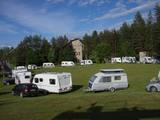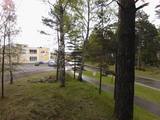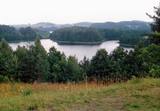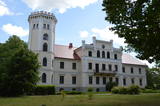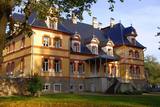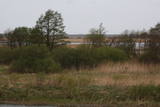| Nr | Name | Beschreibung |
|---|---|---|
|
In the summer season we offer trips by raft and boats, camps for children, an area for organizing events, camping for the night. In the winter season "Baili" has a ski center - downhill ski tracks, ski and snowboard equipment rental, instructor services. Catering offer in a cafe. |
||
|
In der Biographie von K. Valdemārs ist ein bekannter Fakt, dass im Sommer 1839 die Lehrer und Schüler der Volksschule von Lubezere einige Tage am Meer verbrachten – in einer 19 Wersten entfernten Siedlung Roja, wo später unter Vermittlung von K. Valdemārs eine Seefahrtschule gebaut wurde. Das erste Treffen mit dem Meer machte einen atemberaubenden Eindruck auf den Jungen. “Ein großartiger Meeresanblick traf den Jungen wie ein Stoß ins Herz, dass er alle drei Tage nichts anderes dachte, als über großartiges Meer, bei dem mit einer kindlichen Echtheit schon damals einen Plan bzw. Projekt ausarbeitete, auf welche Weise man am Fluss von Roja einen tieferen Hafen für große Boote und kleine Schiffe errichten könnte.” Kr.Valdemārs. (Die Quelle: Roja TIZ) |
||
|
This is the second thickest tree in Latvia and the Baltic States. There is a large and open hole in the trunk of the tree. Like most trees of its size, it has suffered lightning damage. The tree is a wonderful part of the landscape, and a little wooden fence has been put up around it.
|
||
|
Vermutlich ein heidnischer Hügel. Schöner Blick auf die 6 Seenlandschaften. Ein Symbol vom Nationalpark. |
||
|
Einer der größten Weingärten in Lettland mit über 50 Rebsorten. Bei den angebotenen Führungen erzählt der Winzer über den Anbau von Wein und konsultiert bei Fragen zum Thema. Weiterhin gibt es Verkostungen und man kann Rebstöcke kaufen. |
||
|
Interesantā būve, kurai Baltijas valstīs grūti atrast līdzinieku, ir meklējama 2 km ziemeļaustrumos no Kirblas (Kirbla). 307,8 m garo arkveida tiltu pāri Kazari upei (Kasari jõgi) uzcēla 1904. g. deviņu mēnešu laikā. Tajā brīdī to uzskatīja par Eiropas garāko šāda tipa dzelzsbetona tiltu. Tagad to var šķērsot tikai ar kājām vai ar divriteni. Tumšajā diennakts laikā tilts ir skaisti izgaismots! Tā ievērojamais garums ir skaidrojams ar apstākli, ka pavasara palos Kazari palienes applūst lielās platībā. |
||
|
Celta 1933. g. vietējai brāļu draudzei. Baznīcā atrodas glezna “Kristus” (1850. g.) un Liepājas meistara Jēkaba Jauģieša 1920. g. darinātās ērģeles. Mūsdienās dievnamu izmanto Bārtas draudze. Pie baznīcas novietots akmens apkaimes represētajiem iedzīvotājiem. |
||
|
Die Stadt Kuldīga hat es verdient, als die schönste mittelalterliche Stadt in Lettland angesehen zu werden. An ihrer Stelle befand sich schon vor dem 13. Jh. das Zentrum des alten kurischen Landes Bandava. Im Jahr 1242 hat der Livländische Orden an der Stromschnelle des Flusses Venta mit dem Bau einer gemauerten Burg begonnen. An der Burg bildete sich eine Siedlung aus, die als erste in Kurland (1378) Stadtrechte erlangt hat. Eine bedeutende Rolle spielte auch ihre Mitgliedschaft der Hanse. Von 1561 – 1795 war Kuldīga die Hauptstadt des Herzogtums von Kurland. Es ist gesetzmäßig, dass in der ersten Hälfte des 17. Jhs. die Stadt einen schnellen wirtschaftlichen Aufschwung erlebte, der mit dem Nordischen Krieg und mit dem Anfang der Pestzeit endete. Der Stolz der Kurländer und das Fehlen von industriellen Objekten ist ein Grund dafür, dass während der Sowjetzeit keine größere Massen von Einwanderern in die Stadt gekommen sind, darum ist heute Kuldīga eine der lettischsten Städte von Kurland. Es ist wert, in Kuldīga mehr als einen Tag zu verbringen, weil hier es sehr viel zu tun gibt. Naturliebhaber können hier fliegende Fische beobachten, aber die Forscher der Kulturgeschichte haben hier ein breites Arbeitsfeld. |
||
|
Das Restaurant befindet sich im südlichen Teil von Liepaja und es hat eine offene Küche, wo die Kunden der Arbeit des Kochs zuschauen können. Lettische Küche: Steinpilzsuppe, Fischsuppe, dünne Pfannkuchen, Kartoffelpfannkuchen, Lammfleischschnitzel, gegrilltes Schweinefilet, gedämpfte Kalbzunge, Lammschenkel, geschichtetes Quark-Dessert. Das besondere Gericht: Kabeljausuppe nach dem Geschmack von Olive oder der besondere Eiskuchen. |
||
|
Karulas nacionālā parka lielākais ezers - 2,8 km garš, līdz 1 km plats. Ezera ziemeļaustrumu krastā atrodas parka apmeklētāju centrs. 5,5 m dziļais ezers ir gan zivīm, gan nostāstiem bagāta vieta. Ezera un tuvākās apkārtnes iepazīšanas nolūkā ir izveidota 3,5 km garā Ehijerva taka (Ähijärve teerada). Tās sākums atrodas pie iepriekš minētā apmeklētāju centra, kur izveidota atpūtas vieta un atraktīvs bērnu spēļu laukums. Taka sākumā ved gar ezera krastu, nelieliem mitrājiem un meža ceļiem, kas izmantoti iepriekšējos gadsimtos. |
||
|
This is a cliff with various levels. Known as the North Estonian cliff, it stretches all along the shore of the Bay of Rīga in Estonia, including some of the local islands. The most expressive part in geological and landscape terms is the Saka-Ontika-Toila cliff, which is around 22 km long and offers an unusual natural environment. The cliff is as much as 53 m high, and it has a fairly virginal forest along its slopes. The layers of clay, sandstone, limestone, etc., come from the Cambrian and Ordovician periods. The Valaste juga (Valaste waterfall) is 24 metres high. After a longer period of freezing temperatures, the waterfall has a particularly impressive appearance. Seasonal waterfalls (8-10 m) can be found near the villages of Ontika and Toila.
|
||
|
Skaistā ēka atrodas Lizuma centrā. Lizuma muižas īpašumi piederējuši dažādām dzimtām – vācbaltiešiem Tīzenhauzeniem, Malamiem un Volfiem. 1836. g. muižu iegādājas barons Otto Gotlībs fon Volfs, kura laikā muižas pils iegūst tagadējo veidolu – Tjudoru neogotikas stilu ar poligonālu torni. Jau no 1937. g. pilī izvietojusies Lizuma skola, kas ir viens no iemesliem, kādēļ saglabājusies ne tikai pati ēka, bet arī atsevišķi interjera elementi kāpņu telpā, Zilajā (Mednieku) zālē u.c. Pili ieskauj parks, kur atrodas muižas saimniecības ēkas – mūra klēts (te kultūras nams), 1876. g. celtais zirgu stallis (sporta halle), kalpu un dārznieka namiņš u.c. Bijušajā spirta brūzī ražo Gotiņas konfektes. Pils tornī izveidots Lizuma vidusskolas veidotais novadpētniecības muzejs. |
||
|
Am Ufer des Sees Mooste befindet sich der Gutshof Mooste. Neben dem schönen Hauptgebäude liegt als Perle des Gutshofs Mooste einer der großzügigsten Komplexe an Nebengebäuden im historizistischen Stil in Estland. Der englische Park umgibt das Hauptgebäude, wo eine Schule untergebracht ist. In der renovierten Holzwerkstatt ist heute das Gästehaus, im ehemaligen Pferdestall befindet sich das Haus der Restauratoren, im Gutsverwaltershaus das Zentrum für Kunst und Sozialpraktikum und der ehemalige Viehstall dient heute als Konzertsaal. |
||
|
Die Kombüse befindet sich an der Touristeninformation von Salacgriva, in dem historischen Eiskeller für Fische. Dem Thema Seefahrt gewidmete Innenausstattung. Lettische Küche: Kalte Rote-Beete-Suppe, Seefischsuppe, geschmorte Fische und Gemüse, Schokoladewurst, Pfannkuchen mit Erdbeermarmelade, Kwass. Das besondere Gericht: Gebratene und gegrillte Fische: Barsche, Flundern, Zander. |
||
|
Das Wirtshaus befindet sich unweit von der Umleitung von Kuldiga. Es ist ein Wirtshaus der langsamen Bedienung, wo die Gerichte auf lebendigem Feuer aus Erlenholz in der Anwesenheit des Klienten nach dem Slowfood-Prinzip vorbereitet werden. Angebot Mahlzeit im Garten. Lettische Küche: Bohnensalat, Anschovis mit Quark, Gerstengrütze mit geräuchertem Fleisch, falsche Gans, im Sauerrahm geschmorter Zander, Kabeljau mit Zwiebeln und Tomaten, Lammfleischtopf, Zwiebelklops, Schweineleber nach Jägergeschmack, geschmorte Gemüse im Topf, heiße Suppe mit Klößen und Heidelbeeren, lettische Waldbeeren mit Schlagsahne, im Honig karamellisierte Äpfel, Dessert aus Quark. |
||
|
Im Zentrum dieses Schutzgebietes befindet sich der eutrophische See Tosmare, eine ehemalige Lagune des Litorina – Meeres. Der See und seine Umgebung bietet vielen Pflanzen und Vögeln Schutz. Am südlichen Ende des Sees kann man Überreste des ehemaligen Befestigungssystems von Liepāja entdecken, nach Westen hin befindet sich einer der wichtigsten Teile des Systems – der Festungskanal.
|
||
|
The farm breeds some 400 rabbits and also grows strawberries. Breeding rabbits, rabbit meat, strawberry plants (3-4 different kinds) and berries can be purchases. Lettuce is available in the spring and vegetables are on offer in the fall. You can take a tour of the farm and learn about rabbit breeding. |
||
|
Die einzige auf einer Insel des Sees gebaute Birg in Osteuropa. Den Bau der Burg hat am Ende des 14. Jh. der Sohn des litauischen Großfürsten Gediminas Kęstutis angefangen. Ein historisches Museum. |
||
|
Das Tal des Flusses Vējupīte ist für die Reisenden gedacht, die sich vor mehreren steilen Holztreppen nicht fürchten, die an den steilen Hängen des Tals führen. Wenn wir hinter dem Gästehaus Līvkalns absteigen, dann kommen wir an der flachen (3,6 m), aber hohen (6,1 m) Höhle Pētera ala (die Höhle von Peter), die einer Spalte ähnliche Nische ist. Wenn wir etwa 10 Minuten flussabwärts (Richtung Gauja) gehen, wird das linke Ufer des Flusses von dem tiefen Tal Pūču grava (Eulental) durchgespaltet, wo der Fluss Kraukļupīte (Rabenfluss) fließt. An der Stelle, wo sich die beiden Täler zusammentreffen, erhebt sich der Burgberg von Satezele (Hügelfläche 90 x 75 m), wo sich am Anfang des 13. Jhs. die Burg aus Eichenholz des Lehnsherren Dabrelis befand. Der Haupteingang war auf der westlichen Seite des Burgbergs. Von den Tiefen des Tals Pūču grava kann man zum Burgberg eine Treppe hochsteigen. Um das Tal Kraukļu aiza (Rabenschlucht) zu besichtigen, muss dieselbe Treppe herabgestiegen und der Weg Richtung Gauja genommen werden. Das Tal Kraukļu aiza ist das Seitental des linken Ufers von Vējupīte mit bis zu 11 m hohen und eindrucksvollen Sandsteinwänden, wo sich die 5,2 m tiefe Höhle Kraukļu ala (Rabenhöhle) herausgebildet hat. Wenn wir noch etwa 10 – 15 Minuten gehen (den Fluss Vējupīte auf hölzerne Brücken überqueren), kommen wir an einer Treppe, die auf den Hügel Paradīzes kalns (Paradiesberg) führt (die Beschreibung siehe vorher bei der Nr. 7). |
||
|
BURSH brewery – one of the smallest breweries in Latvia which is situated between Zemgale, Vidzeme, Latgale and Selija territories – in the Plavinu territory of Aiviekste district. Beer connoisseurs are offered dark and light beer BURSH. BURSH is made of water, barley malt, hop and yeast, is boiled on a firewood stove, fermented in oak barrels and prepared for 30 days. LLC „ECOS” uses only natural raw material in the process of brewing. Beer is made according to the special recipes made especially for BURSH brewery and with attention to traditiaonal methods of brewing beer. |
||
